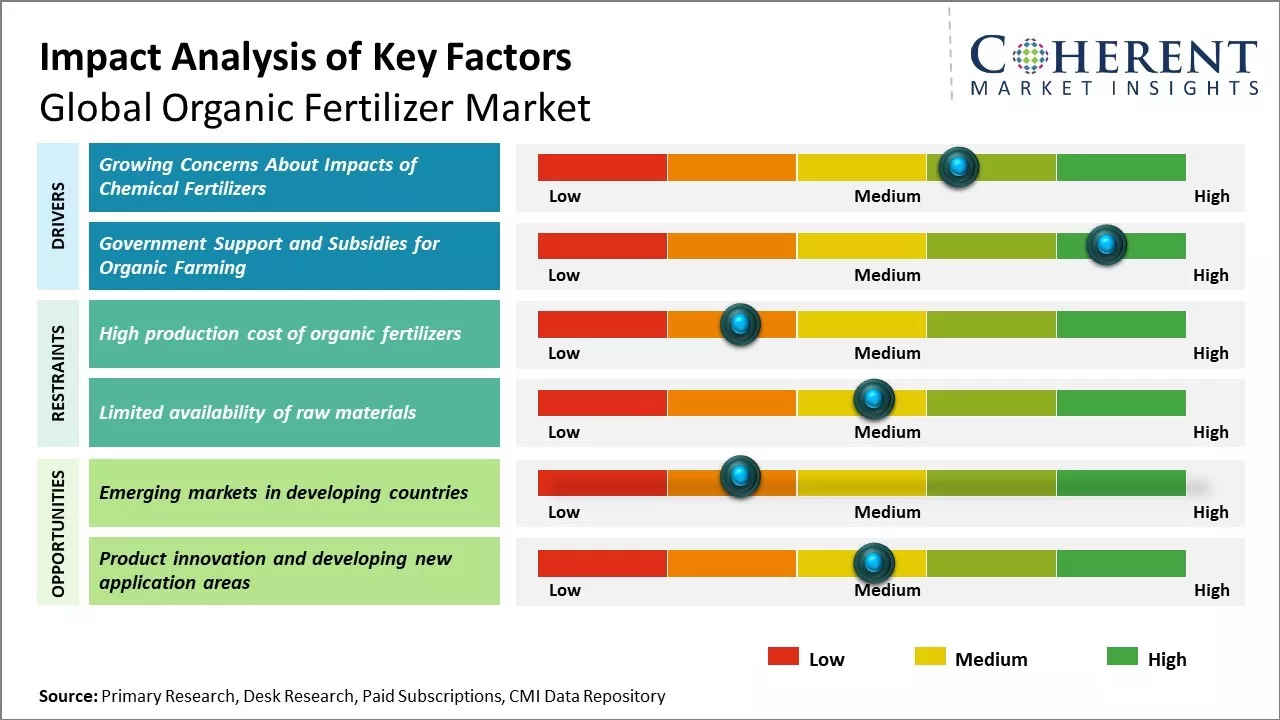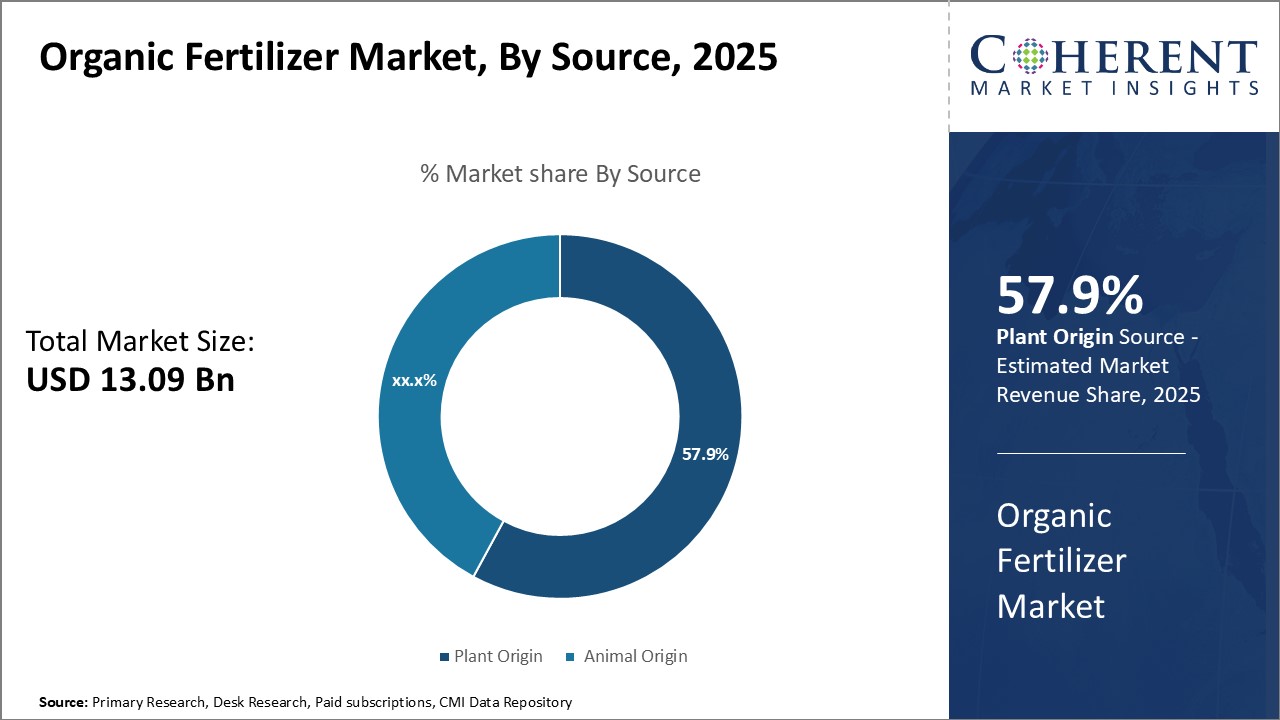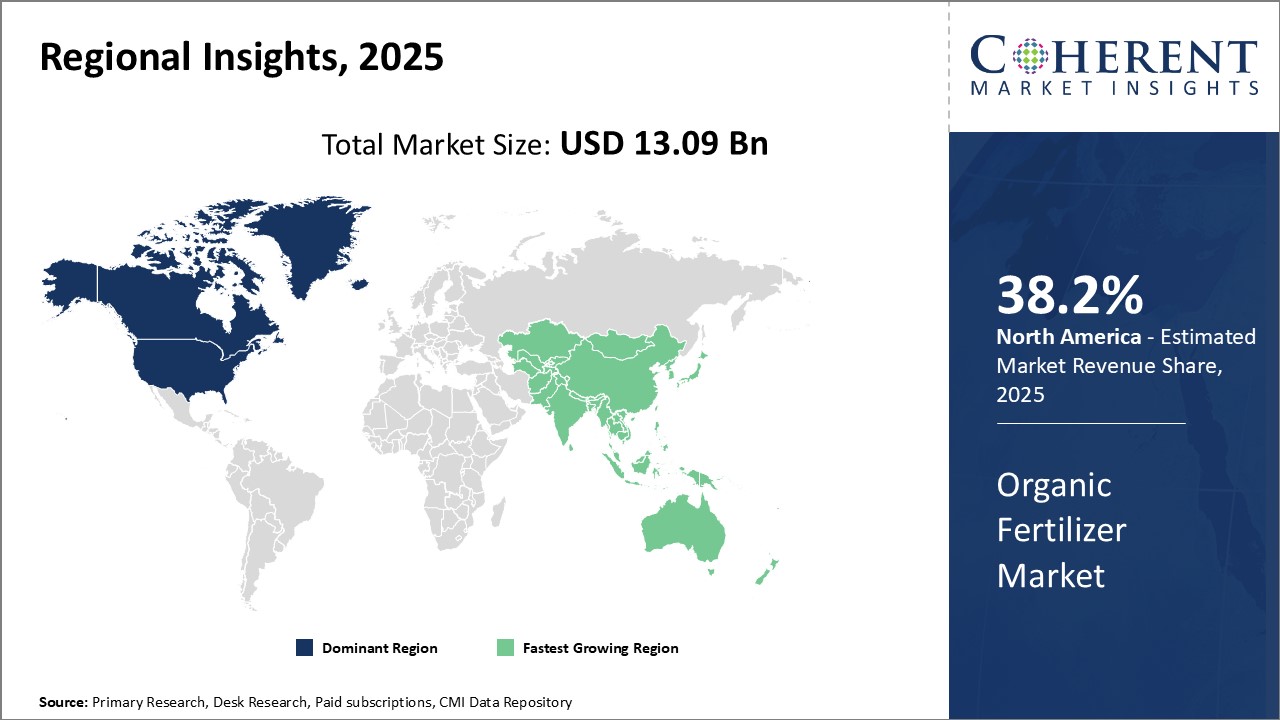The organic fertilizer market is estimated to be valued at USD 13.09 Bn in 2025 and is expected to reach USD 20.08 Bn by 2032, exhibiting a compound annual growth rate (CAGR) of 6.3% from 2025 to 2032.

Discover market dynamics shaping the industry: Request sample copy
The organic fertilizer market is expected to witness significant growth over the forecast period. The growing consumer preference for organic and environment-friendly products is one of the major factors driving the demand for organic fertilizers. There is an increasing demand from farmers for organic variants to maintain the fertility of soil and provide better yields in the long run. Additionally, bans on chemical fertilizers in several countries due to the negative environmental impact are further complimenting the market growth. However, high production costs and lack of awareness in some regions may hinder the organic fertilizer market expansion to some extent.
Growing Concerns About Impacts of Chemical Fertilizers
The extensive use of chemical fertilizers across the globe in both industrial, agriculture as well as household gardens has raised concerns about its impact on the environment and health over the years. Chemical fertilizers are made from synthetic ingredients and several studies have shown that they can have harmful effects on soil quality as well as water bodies if used extensively over long periods of time. Nitrogen-based chemical fertilizers are known to deteriorate the quality of soil by destroying microorganisms. They make the soil acidic and also deplete other vital nutrients from it over repeated use. This affects the sustainability of agricultural lands in the long run. The chemical run-offs from fertilizers have also seriously polluted water sources like rivers, lakes, and groundwater. The excess nitrogen gets dissolved in water and causes eutrophication, destroying aquatic life. It has led to widespread occurrence of red tides and dead zones in seas and oceans around the world. On the health front, nitrates from fertilizer residues in food crops have been linked to incidences of cancer, birth defects, and other serious diseases in many epidemiological studies. There are also concerns that continued reliance on mineral fertilizers will degrade soils to a point where they can no longer support sufficient crop yields to feed the growing global population. All these environmental and health hazards of intensive chemical fertilizer usage have triggered interest in safer and more sustainable fertilizing practices worldwide. There is a growing realization that soils need to be nourished in a balanced manner without compromising its nutrient balance and biodiversity in the long-run. This shift towards healthier soils and environment is expected to increase the demand for organic fertilizers made from natural or waste-based ingredients like compost manure, food waste, and crop residues in the coming years.

Get actionable strategies to beat competition: Request sample copy
Government Support and Subsidies for Organic Farming
Many national and local governments are also promoting organic and sustainable agricultural practices through financial incentives and policy support. They offer subsidies on organic inputs, aid for certification, and provide price support programs for organic produce in their aim to reduce agriculture's ecological footprint. In Europe and North America especially, strong government backing through dedicated schemes have encouraged thousands of farmers to transition to certified organic cultivation over the last decade. Recent data shows that the area under organic farming worldwide has more than doubled during the same time period.
Key Takeaways of Analyst:
The global organic fertilizer market has strong growth potential driven by increasing consumer demand for organic and chemical-free food products. More farmers are adopting organic practices which is expanding the market.
Strong government support through subsidies and initiatives is also boosting the adoption of organic fertilizers. However, higher costs of organic fertilizers compared to conventional ones could restrain the market growth to some extent.
Key players should focus on the Latin America market which is at a nascent stage currently. As consumer awareness rises regarding health impacts of chemical residues, the demand for organic alternatives will pick up in countries like Brazil and Argentina presenting good opportunities. Manufacturers investing in R&D to develop innovative formulations tailored to specific crop needs can gain an edge.
Market Challenges: High production cost of organic fertilizers
The high production cost of organic fertilizers is one of the major factors restraining the growth of the global organic fertilizer market. Producing organic fertilizers involves multiple processes that make it more expensive than conventional chemical fertilizers. Organic fertilizers are produced from various natural and organic raw materials such as animal manure, green waste, food waste, and by-products of organic livestock and poultry farming. Collecting these raw materials at large scales, processing them to make homogeneous fertilizer products, and ensuring certain quality standards drives up the production costs. Additionally, the organic certification process also contributes to the higher costs. Organic fertilizer producers need to adhere to strict organic farming standards set by regulatory bodies. This involves following guidelines at each stage of production from procuring raw materials to packaging and storage. The certification process entails periodic inspections and auditing to verify that producers are complying with the organic standards. All these regulatory requirements lead to increased overhead costs for organic fertilizer manufacturers compared to chemical fertilizer producers who are not subject to such strict certifications.
Market Opportunities: Emerging markets in developing countries
Emerging markets in developing countries present a huge opportunity for growth in the global organic fertilizer market. With a rising population and economic development, demand for food is increasing rapidly in countries such as India, Brazil, Indonesia and others. However, conventional farming practices using chemical fertilizers are unsustainable in the long run and negatively impact the environment. At the same time, there is a growing health consciousness among consumers who prefer food grown without chemicals.

Discover high revenue pocket segments and roadmap to it: Request sample copy
Insights by Source: Biodegradable Organic Matter Boosts Plant Origin Segment
In terms of source, plant origin is expected to contribute 57.4 % share of the organic fertilizer market in 2025, owing to various advantages over animal origin sources. Most plant-based organic fertilizers are derived from green waste and food waste which are biodegradable in nature. Their decomposition releases nutrients in a gradual and sustained manner, providing continuous nourishment to soil. This prevents nutrient run-off and maintains long-term soil fertility. Furthermore, plant sources have fewer issues with pathogenic microbes and foul odor during decomposition compared to animal manures. They also provide carbonaceous biomass that enhances soil structure and water retention. The widespread availability of plant-based waste streams and ease of collection makes these sources highly scalable and affordable.
Insights by Form: Solid Form Dominates on Back of Bulk Transport and Storage
In terms of form, the solid segment is expected to account for 67.9% of the market share in 2025, due to the operational efficiencies associated with its physical properties. Solid organic fertilizers such as compost, fertilizer pellets, and dry manures allow for bulk transportation using cost-effective modes like trucks and railways. Their dense nature permits compact storage in warehouses and distribution to remote agricultural areas. Solid forms have high nutrient densities that facilitate precise application through mechanical spreaders according to requirements of different crops. They pose minimal risks of contamination during handling. Though liquid fertilizers offer advantages like foliar feeding, their transportation and storage require specialized assets adding to production costs.
Insights by Application: Cereal and Crop Cultivation Drives Application in Food Basin Areas
In terms of application, the cereal and crops segment is expected to lead the organic fertilizer market owing to their widespread cultivation with 32.7% of the market share in 2025. Cereal grains and other staple crops constitute a major part of the global food supply. Vast cultivated areas for cereals, vegetables, and pulses exist in food basin regions to meet domestic demand as well as exports. Since organic fertilizers gradually enrich the soil over the long-term, they are highly effective for high-yield cereal and crop production. Additionally, rules and regulations in many countries encourage the use of organic inputs in primary food-grains to ensure safety. Strong demand from cereal growers has made this segment the largest application area for organic fertilizers globally.

Need a Different Region or Segment? Customize now
North America has been the dominant region in the organic fertilizer market for many years. The region is expected to account for 38.2% of the market share in 2025. The U.S. accounts for the largest share due to strong demand from both agricultural and non-agricultural sectors. Farmers in the Midwest have increasingly adopted organic practices in recent times, driving volumes significantly. Many state governments provide subsidies to promote organic and sustainable agriculture as well. Additionally, household and commercial customers prefer organic options for their lawn and garden care. Major players have established production facilities catering to this huge base, aiding easy availability across the country. Some of the popular brands dominating retail shelves are widely recognized. However, high input and compliance costs pose challenges, limiting overall acreage still.
The Asia Pacific region has emerged as the fastest growing organic fertilizer market globally over the past five years. China represents the epicenter of growth while India is fast catching up. Both countries have huge populations and corresponding demand for food grains. This necessitates maximizing yields while maintaining soil health. The governments of China and India are actively supporting organic sector development through schemes and incentives. The focus on the export of organic products has spurred investment towards infrastructure and certification. Local production is rising steadily to achieve self-sufficiency as well as to address growing imports. Market pressures have forced traditional fertilizer suppliers to include organic variants in their product portfolios. Overall favorable regulations and policy push combined with a conducive pricing structure have made the region highly attractive for both domestic and international firms. The robust economic growth further complements volume gains across nations.
Organic Fertilizer Market Report Coverage
| Report Coverage | Details | ||
|---|---|---|---|
| Base Year: | 2024 | Market Size in 2025: | USD 13.09 Bn |
| Historical Data for: | 2020 To 2024 | Forecast Period: | 2025 To 2032 |
| Forecast Period 2025 to 2032 CAGR: | 6.3% | 2032 Value Projection: | USD 20.08 Bn |
| Geographies covered: |
|
||
| Segments covered: |
|
||
| Companies covered: |
Yara International ASA, PT Pupuk Kalimantan Timur, BASF SE, FMC Corporation, Lallemand Inc., T Stanes & Company Limited, Madras Fertilizers Limited, Cropmate Fertilizers Sdn Bhd, Midwestern BioAg, Biostar Renewables, LLC, NatureSafe, Biolchim Spa, Rizobacter Argentina S.A., National Fertilizers Limited, Gujarat State Fertilizers & Chemicals Ltd., String Bio, Rashtriya Chemicals & Fertilizers Ltd, Agrinos, Biomax Naturals, and Symborg (Corteva Agriscience) |
||
| Growth Drivers: |
|
||
| Restraints & Challenges: |
|
||
Uncover macros and micros vetted on 75+ parameters: Get instant access to report
Share
Share
About Author
Yash Doshi is a Senior Management Consultant. He has 12+ years of experience in conducting research and handling consulting projects across verticals in APAC, EMEA, and the Americas.
He brings strong acumen in helping chemical companies navigate complex challenges and identify growth opportunities. He has deep expertise across the chemicals value chain, including commodity, specialty and fine chemicals, plastics and polymers, and petrochemicals. Yash is a sought-after speaker at industry conferences and contributes to various publications on topics related commodity, specialty and fine chemicals, plastics and polymers, and petrochemicals.
Missing comfort of reading report in your local language? Find your preferred language :
Transform your Strategy with Exclusive Trending Reports :
Frequently Asked Questions
Joining thousands of companies around the world committed to making the Excellent Business Solutions.
View All Our Clients
US Reciprocal Tax Impact Analysis On Organic Fertilizer Market
Stay updated on tariff changes with expert insights and timely information